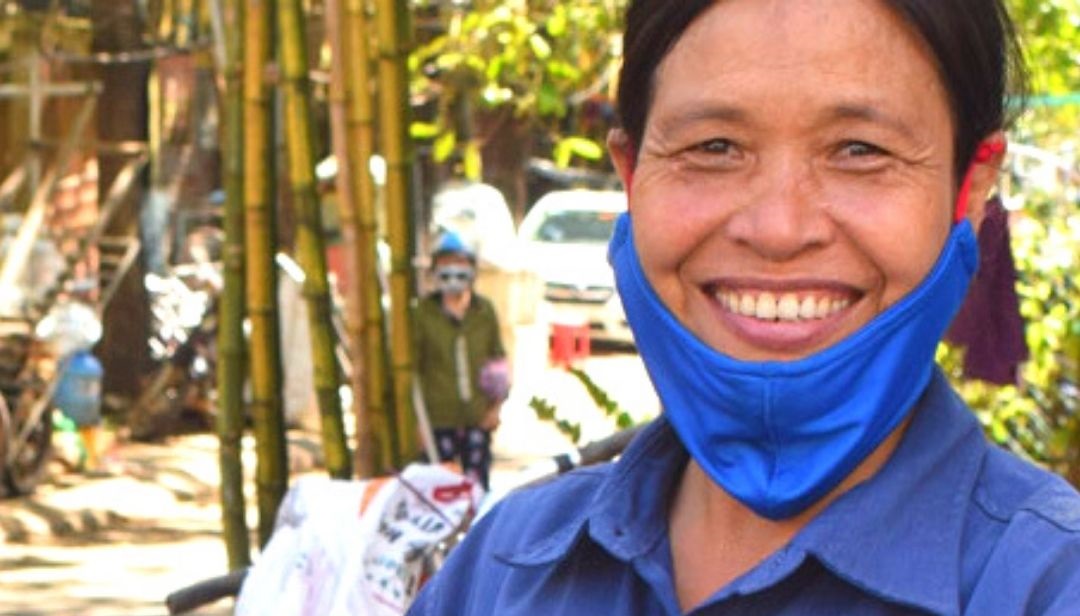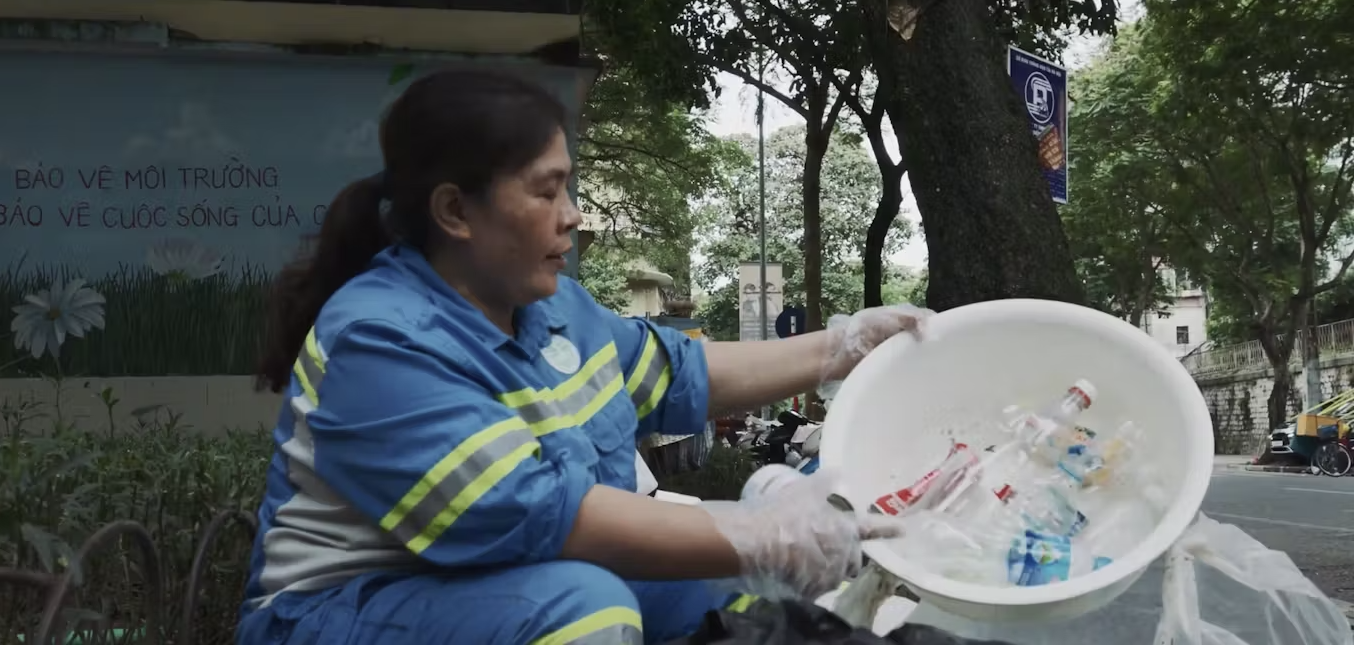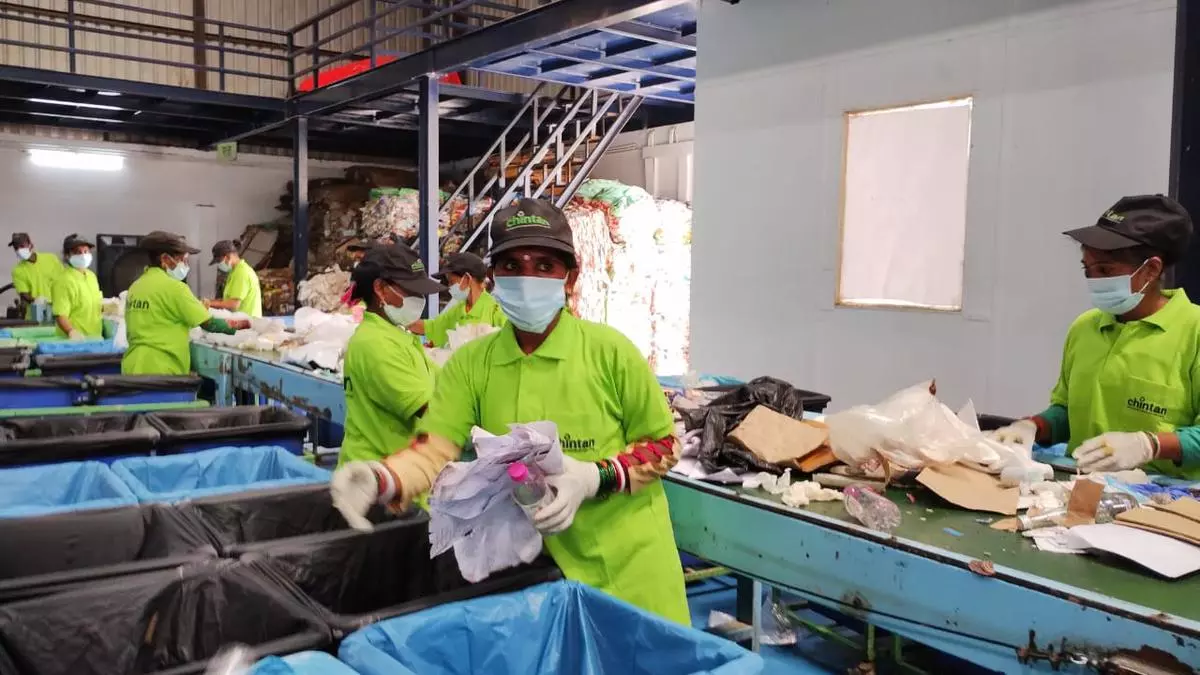Welcome to the “Women Driving Circularity” series, part 10. In this part, we feature the inspiring story of Ms. Huong with a workshop that recycles leftover fabrics and thrown-away panels in Ha Khau ward, Ha Long City, Quang Ninh province.

Ms. Huong processing fabric collected at a garment and fabric recycling factory, Ha Long City.
Surprised and fascinated when I saw my colleague’s bags – those sewn from old panels that are no longer used – I went to Ms. Huong’s house, in Ha Khau ward, Ha Long City. I met her on a sunny afternoon in her living room, also a recycling workshop in Ha Long City. I was surrounded with panels, old fabric and half-finished bags.

Shopping bags made from panels

Pencil cases recycled from panels and excessive fabric
She shared that the opportunity that brought her to this job was the meetings in the project to promote plastic reduction and about methods of recycling plastic waste, jointly organized by the Women’s Union of Ha Long City and GreenHub. With the desire to change her job, and a great entrepreneurial spirit, after being introduced to the model of reusing old panels, she immediately started implementing the idea. However, things are not as easy as she thought. On average, it takes her about 4 days to 1 week to finish a product.
The first thing to do was to collect old panels at public and private conferences and from old banners on the street, or old fabric left over from tailors. At first, the Ha Long City Women’s Union supported her by connecting her with units that had panels and excess fabric. Aware of her purposes, many units are willing to give these materials. The recovered fabric and panels cannot be used immediately, however, as it takes more time to wash, dry, iron, etc. It was way more difficult than buying new materials. On average, those wrinkled old panels have to be stacked for 3-5 days to straighten, the fabric also takes about the same time to sew.
Next is the cutting and sewing process. You must calculate the measurements of fabrics so that you can utilize the most of them. “I take actions for the environment’s benefits – I have to do whatever to have the least amount of waste,” she confided. Then she places the fabric on the panel and cut.

Ms. Huong instructs her daughter to measure and cut panels
Final step is to sew. On average, 1 person can only sew 1 bag per day. It’s not easy either to match different colors. Even though she knows well about wood, nails, machinery as her family used to have a shipyard, color matching and proportion of sizes are indeed a big challenge for her.
Plans for the future!
Looking at her battling with the fabrics and panels, I admire her greatly. I feel for her hard work, and I admire her eagerness to learn and overcome difficulties. I asked, “Do you have any wishes for the future to help you cope?” She said she wanted to learn about sewing and arts, to make more delicate products. She also wants to be supported in finding output – generating revenue so that she can be assured to develop this product.
If you want to buy these meaningful products, you can visit Ha Khau ward, Ha Long city.
——————————————
Story and photos shared by GreenHub. GreenHub – as a companion, always helps with both capacity development and business idea enhancement. Hopefully, in the upcoming, there will always be further companionship of individuals and organizations who love the environment.
Read how UNDP is advancing a gender-sensitive inclusive Circular Economy: The tactics “3Vs” to drive a gender-inclusive circular economy – Viet Nam Circular Economy
















